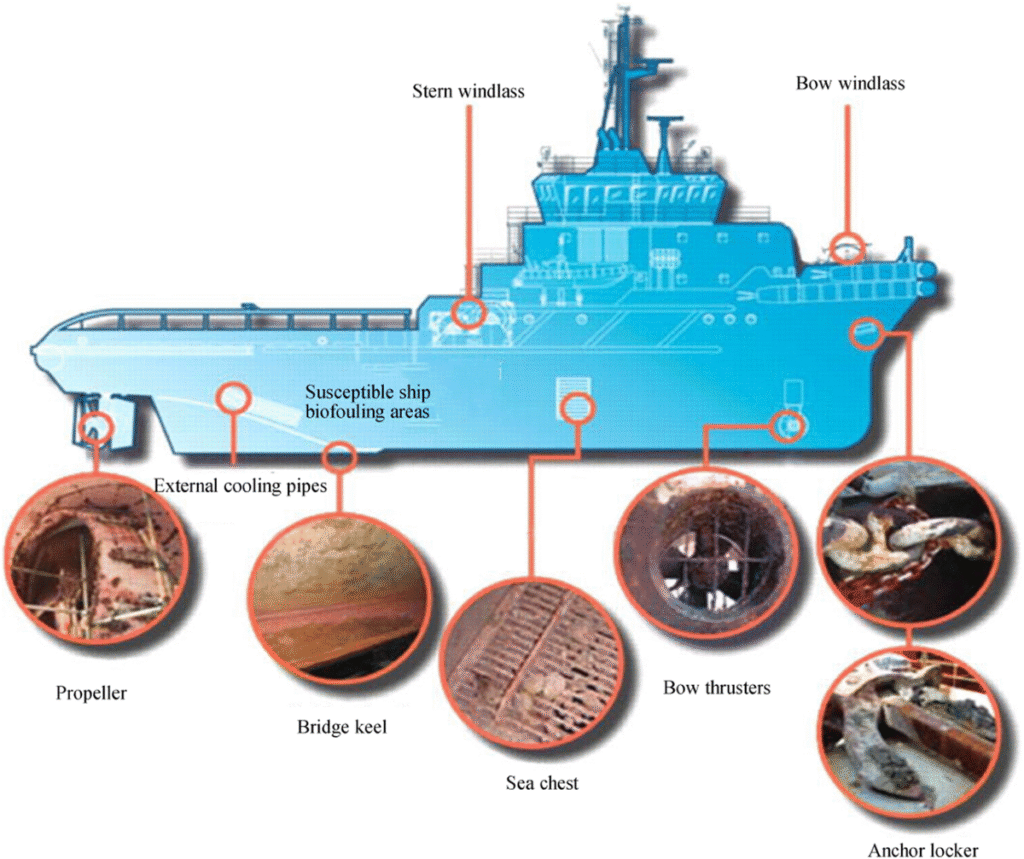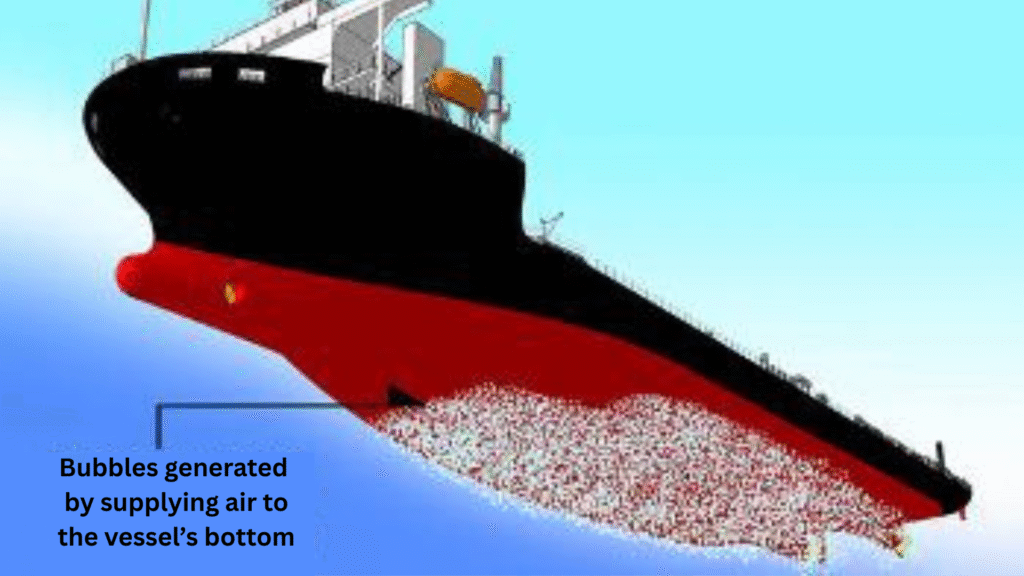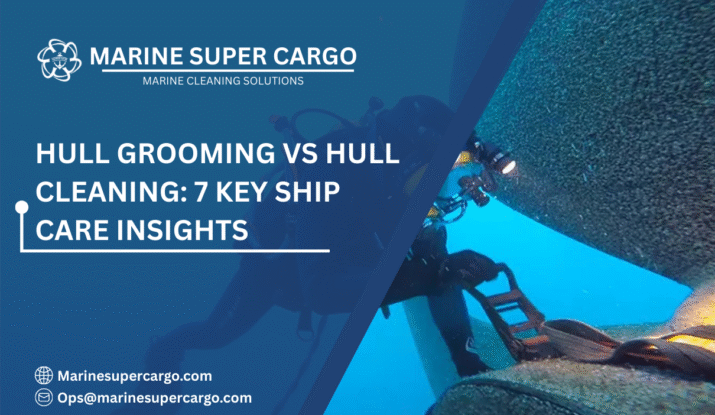Imagine your ship’s hull like the skin of a living being. If you nurture it regularly with care and attention, it stays smooth and strong. But if you ignore it, growth builds up—barnacles, algae, and sea slime—that weaken efficiency, increase fuel burn, and invite costly repairs. This tension between upkeep and correction is what makes the debate of Hull Grooming vs Hull Cleaning so critical in modern shipping.
Should you maintain the hull frequently with gentle, preventive methods, or wait until fouling becomes a problem and then remove it with corrective cleaning? Thanks to innovative systems like HullWiper and Groom, we now have both options—each powerful in its own way.
In this article, we’ll compare Hull Grooming vs Hull Cleaning, explore the preventive vs. corrective approaches, and highlight how automation is reshaping the landscape of vessel maintenance.
Why Hull Care Matters More Than Ever
Hull fouling isn’t simply an aesthetic issue—it’s about ship health, performance, and compliance. The International Maritime Organization (IMO) has long highlighted how marine biofouling increases drag, often raising fuel consumption by 20–40%.
Consequences of neglecting fouling include:
- Lost fuel efficiency → higher operating costs
- Increased emissions → trouble meeting MARPOL Annex VI targets
- Spread of invasive species → violating IMO-IAPH biofouling guidelines
- Shortened coating lifespan → higher dry-docking and repainting bills
Clean hulls aren’t a luxury—they’re the foundation of profitable and compliant shipping.
Hull Grooming vs Hull Cleaning: The Core Difference
The debate of Hull Grooming vs Hull Cleaning boils down to timing and intent.
- Hull Grooming: Preventive maintenance. It’s like brushing your teeth every day—regular, gentle, and designed to stop buildup before it becomes a problem. Groom systems use soft-bristled robotic brushes or magnetic crawlers to continuously disrupt early slime growth.
- Hull Cleaning: Corrective maintenance. Instead of preventing, you fix. When fouling accumulates, technologies like robotic water jets or brushes (for example, HullWiper) step in to clean heavily fouled hulls.
Think of grooming as “prevention” and cleaning as “treatment.” Both matter, but in different contexts.

Traditional Hull Cleaning and Its Limitations
Before the rise of robotics, hull cleaning was almost entirely diver-based. Divers equipped with scrapers, brushes, and sometimes high-pressure jets would manually remove fouling.
While helpful, traditional methods faced challenges:
- Diver safety → entanglement, decompression, and poor-visibility risks.
- Uneven results → some areas missed or inconsistently cleaned.
- Coating damage → scrapers inadvertently stripped protective paints.
- Environmental harm → biofouling drifted freely into ecosystems, carrying invasive species.
The industry’s shift to high-tech solutions like HullWiper and Groom highlights the growing recognition that ships need smarter and cleaner ways forward.
Hull Grooming Explained
Hull grooming uses robotic systems—such as Groom—that regularly pass over the hull surface, often between voyages. These machines employ soft brushes or suction to gently disturb biofilm before barnacles and algae can take hold.
Advantages of Hull Grooming:
- Prevention-based: Stops biofouling before it requires costly removal.
- Preserves coatings: Gentle and non-invasive, extending paint life.
- Continuous efficiency: Hulls remain consistently smooth, cutting fuel costs.
- Regulatory alignment: Supports IMO’s push for biofouling management plans.
- Minimal downtime: Grooming can often be done alongside port stays without disrupting cargo operations.
Hull grooming is like routine workouts—it keeps the “ship’s body” always fit rather than waiting for an emergency repair. Also read about underwater hull cleaning in Ecuador.
At Marine Super Cargo, we provide trusted marine cleaning solutions across 1,100+ ports worldwide. From hold cleaning to underwater hull cleaning and tank cleaning, our services are designed to keep your fleet fully compliant, efficient, and cargo-ready. pic.twitter.com/N5VYZZjlQH
— Marine Super Cargo (@Marinsupercargo) September 11, 2025
Hull Cleaning Explored
Hull cleaning, by contrast, becomes necessary when fouling breaches prevention efforts. Systems like HullWiper lead the charge here. Instead of brushes, HullWiper uses seawater jets to dislodge fouling while suction units capture waste for proper filtration and disposal ashore.
Advantages of Hull Cleaning (HullWiper model):
- No brush abrasives: Protects hull coatings from premature damage.
- Waste capture: Prevents biofouling from spreading into ports, aligning with MARPOL and IAPH guidelines.
- Works in multiple conditions: ROVs can clean hulls day or night, often while cargo operations continue.
- Deep cleaning: Effective even for stubborn barnacle and mussel buildup.
Cleaning is corrective—it restores performance once fouling takes hold.
Hull Grooming vs Hull Cleaning – A Comparison
| Aspect | Hull Grooming | Hull Cleaning |
|---|---|---|
| Approach | Preventive (regular care) | Corrective (problem-solving) |
| Fouling Stage Target | Early-stage biofilm/slime | Moderate to heavy fouling |
| Technique | Gentle brushes/suction | Seawater jets or robotic removal |
| Environmental Impact | Minimal release | Controlled release & filtration |
| Coating Protection | Very high | High, but slightly more invasive |
| Ideal Tool | Groom robots | HullWiper systems |
Together, they represent the prevention vs. cure model in shipping’s maintenance ecosystem.
Regulatory Context
The conversation of Hull Grooming vs Hull Cleaning fits neatly into tightening regulations.
- IMO Guidelines (Biofouling 2011 and updated 2022) → Ship operators are urged to have biofouling management plans.
- MARPOL Annex VI → Cleaner hulls contribute to emissions cuts.
- IAPH standards → ports increasingly regulate in-water cleaning practices to prevent invasive species spread.
- IMCA best practices → promote safety and efficiency in subsea operations.
Both grooming and cleaning systems, especially HullWiper and Groom, are recognized for advancing environmental and compliance goals.
Business Case: Why It Matters
Why should shipping executives pay attention to Hull Grooming vs Hull Cleaning?
- Fuel savings: Even 10% efficiency gains translate into millions annually for large fleets.
- Reduced downtime: Automated robots operate during port stays, cutting delays.
- Lower risks: Fewer divers mean reduced insurance and liability costs.
- Asset longevity: Hull coatings last longer under preventive or gentle corrective methods.
- Reputation: Demonstrating eco-stewardship boosts stakeholder confidence in ESG-driven markets.
Ignoring the hull is like ignoring the tires on a freight truck—it directly eats profits and risks compliance penalties.

Challenges and Limitations
Some challenges remain for widespread adoption:
- High capital cost → smaller operators may hesitate.
- Training needs → crews must be familiar with robotic systems.
- Port approvals → not all ports yet permit in-water robotic cleaning.
- Different hull geometries → complex shapes can require specialized robotic solutions.
Yet, with rising regulation and fuel costs, economics are tilting steadily toward adoption.
The Future of Hull Grooming vs Hull Cleaning
The future is hybrid. Ships may practice regular grooming to prevent buildup and deploy corrective cleaning systems as an occasional backup. Advances in automation, AI, and predictive maintenance will soon make hybrid strategies seamless.
We can expect:
- AI-driven grooming schedules predicting fouling risks zone-by-zone.
- Smart ports are deploying fleets of robotic cleaners directly as part of harbor services.
- Autonomous Groom robots integrated into fleets, operating on routine cycles without crew intervention.
- Data-driven reporting where grooming and cleaning robots provide detailed digital biofouling reports to ship operators and regulators.
Shipping is sailing into a world where “clean hulls” will be the default, not the exception.
Conclusion
The debate of Hull Grooming vs Hull Cleaning is not about choosing one over the other but about smarter integration. Groom represents preventive hygiene; HullWiper offers corrective therapy. Together, they help ship operators maintain peak efficiency, reduce emissions, and stay compliant in an increasingly strict regulatory world.
3 Key Takeaways:
- Grooming prevents fouling, while cleaning corrects it once buildup occurs.
- HullWiper and Groom together represent a comprehensive, sustainable solution.
- Clean hulls cut costs, reduce emissions, and improve compliance outcomes.
For expert insights into implementing sustainable hull maintenance strategies, visit CleanShip.co and explore future-ready solutions.
FAQ:
Q1. What is the main difference between Hull Grooming vs Hull Cleaning?
Grooming is preventive, using gentle systems to stop fouling early, while cleaning is corrective, removing existing fouling with advanced robotics like HullWiper.
Q2. Which is better for long-term cost savings?
Hull grooming often provides better long-term ROI by preventing biofouling buildup, but Hull Cleaning is essential when fouling surpasses the early stages.
Q3. Are robotic systems like HullWiper and Groom environmentally safe?
Yes. These systems either prevent fouling release (grooming) or capture debris during cleaning, aligning with IMO and MARPOL standards.
Q4. Can Hull Grooming vs Hull Cleaning be used together?
Absolutely. Grooming maintains continuous efficiency, while targeted cleaning acts as backup for tougher fouling stages. Together they offer holistic hull care.
Q5. What is the future of Hull Grooming vs Hull Cleaning?
The future lies in automation, AI-driven maintenance schedules, and universal adoption of robotic systems integrated with port operations worldwide.


